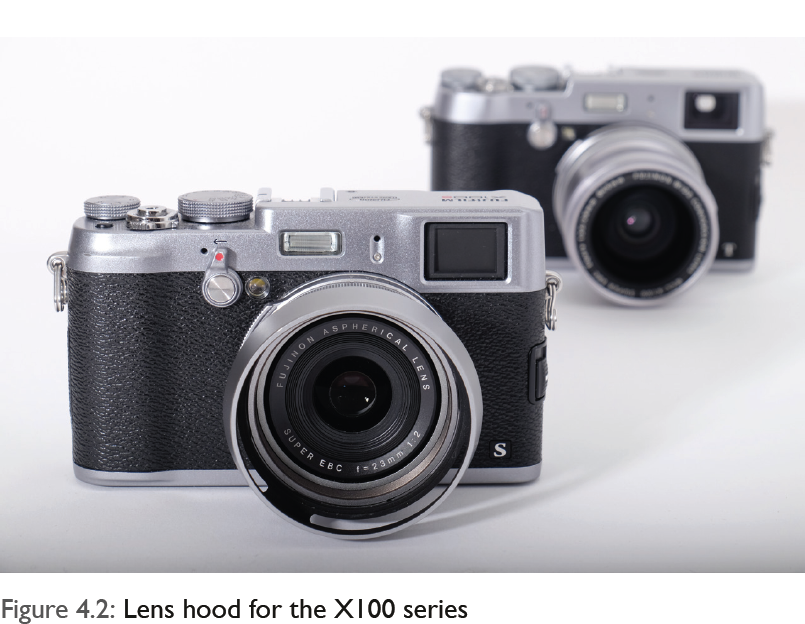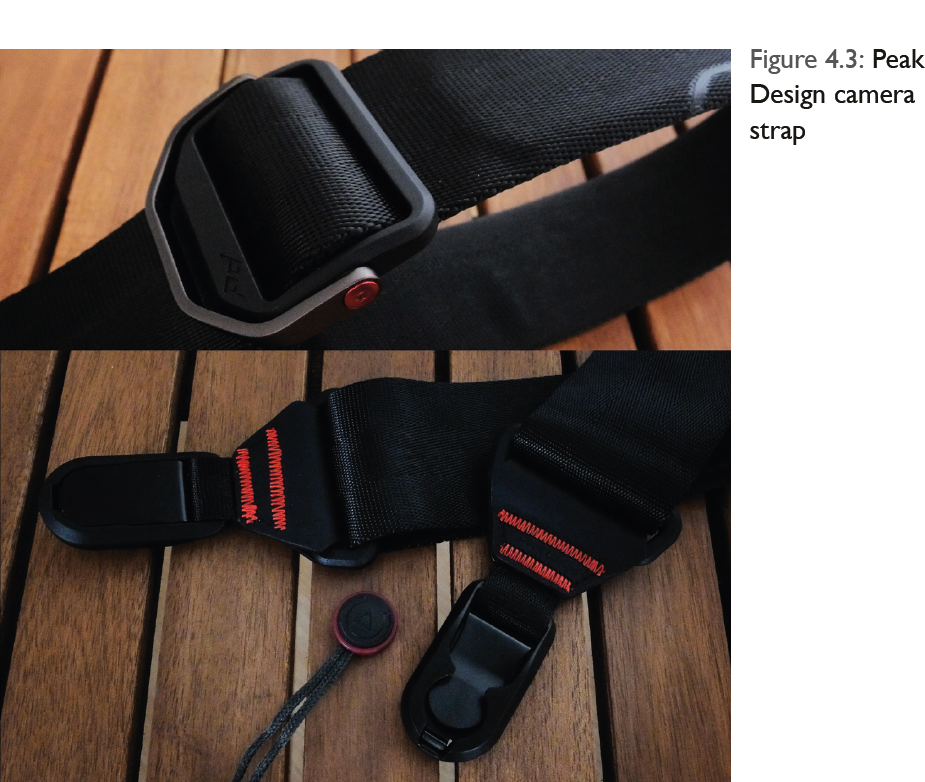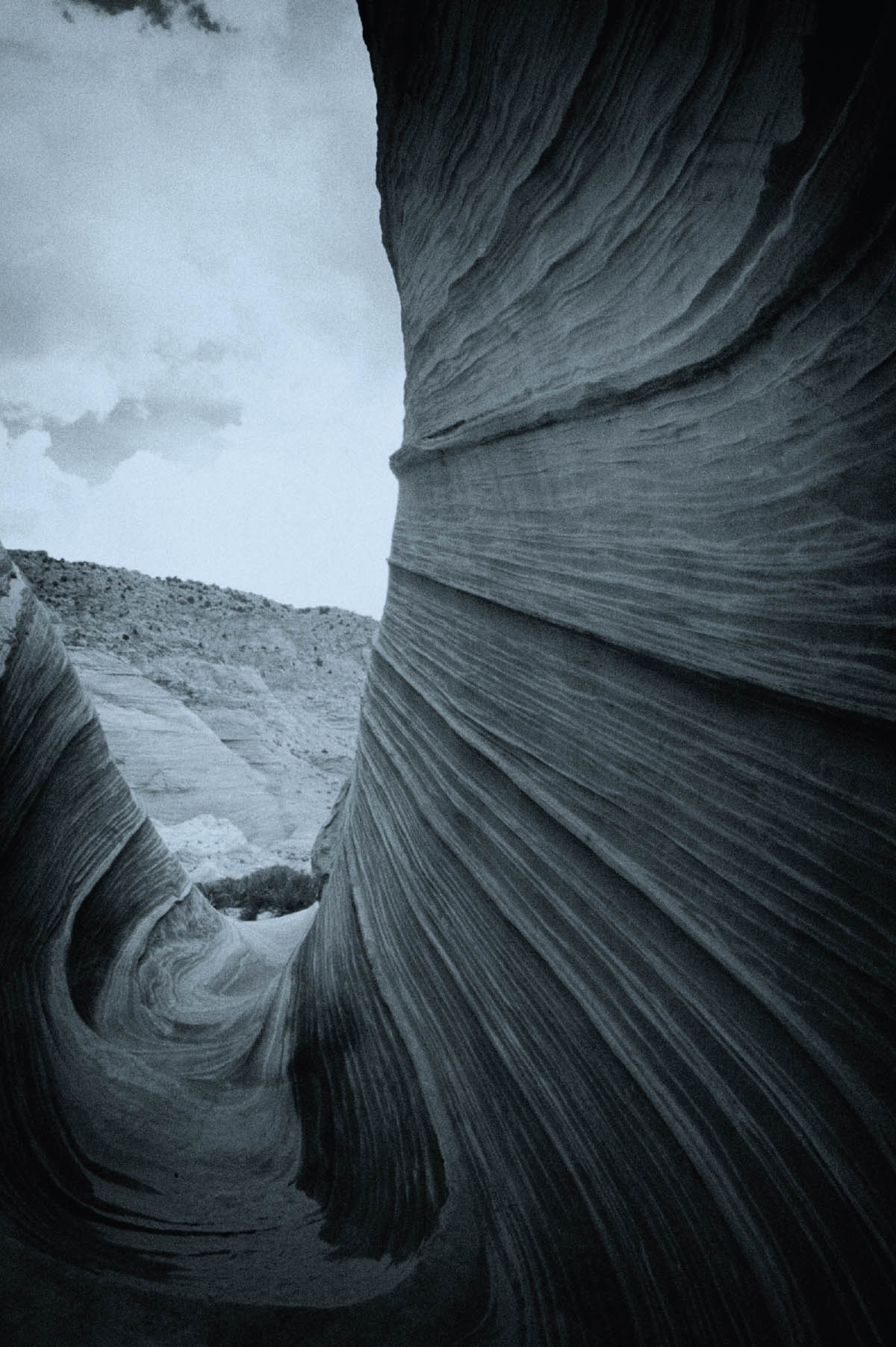4 ACCESSORIES
Accessories often make life easier and can turn your camera into an even more user-friendly tool. Because Fujifilm cameras are so popular, there is no shortage of gadgets on the market. I’ll discuss a few of them here, focusing on products I’ve tested myself.
Taking pictures is more enjoyable when you have a firm grip on your camera and can operate the controls smoothly, which is why I always use a handgrip when I shoot with the Fujifilm X-Series cameras. The Fujifilm MHG-X100 works perfectly. It is compatible with Arca-Swiss tripod heads without an adapter plate; the clamping mechanism of the tripod head engages directly with the grip attachment.
The Fujifilm LH-X100 lens hood is compatible with all three of the X100 series cameras. In addition to its primary function of preventing incident light from entering the lens and producing unwanted flare and reflections in your image, it also protects the lens.
I can’t tell you how many times I’ve watched the following scenario play out in camera stores: A customer has just picked out a high-quality camera and lens, and before the salesperson can lead him or her to the checkout counter, the customer is already talking about needing protective filters. I don’t think additional glass surfaces can improve image quality. High-end filters are optically superior, of course, but you should use filters only when they serve a specific purpose for your photography, such as with polarizers and ND filters. However, you can use any filter that has a 49mm diameter with the X100 series cameras. The Seven5 system from Lee Filters is an elegant solution for your filter needs (see chapter 5, “Links”). The system has three parts: the adapter ring that screws onto the lens, the filter holder that attaches to the adapter, and the filter that slides into the holder. You can fit up to three filters in the holder at once.
The selection for camera straps is seemingly endless. I tend to avoid straps that have bold, conspicuous lettering on them and opt for understated straps that attract less attention. For years I’ve been a big fan of the camera straps and clips from Peak Design (see chapter 5, “Links”). The company’s products are made from high-quality materials; they are developed by photographers, for photographers; and they are highly customizable, thanks to an ingenious clasp system.
It seems that a perfect gear bag is always a work in progress, partially because your collection of equipment changes over time. Furthermore, your equipment needs vary for each photographic excursion. You can find countless bags, backpacks, and combinations thereof in all imaginable shapes, sizes, and price ranges. At one point, my collection had become quite impressive, but I never seemed to find the perfect fit. Eventually I discovered that I could convert one of my general purpose bags into a customized photo bag by using a camera case insert. It offers the best of both worlds—totally inconspicuous from the outside, and perfectly designed for my photographic needs on the inside. It is also a relatively affordable solution—most camera case inserts cost between $15 and $30, including the one I chose from ONA (see chapter 5, “Links”). As for the main bag to use with an insert, it’s likely you already have something that will work.
Photographers who travel have special packing requirements. I put my Fujifilm X100T, both conversion lenses (28mm and 50mm), the Lee filter system, and three fully charged batteries in my travel pack. If you use Apple products, you likely have a power plug adapter that fits into the original Fujifilm battery charger, which is a more compact option than packing the cumbersome power cord. To take care of data safety and backup, I pack several smaller SD cards (e.g. 8 GB cards) and an external hard drive, ideally with an SD card reader. Including a laptop has obvious advantages, including being able to view, edit, and send images while on location, but it also makes your gear heavier and bulkier.
Other small but useful objects you might want to pack include a microfiber cloth, a small bellows, and a pack of silica gel to safeguard your equipment against moisture if you’re headed to a humid climate. Include a stash of business cards, because meeting new people is part of travel and travel photography. You might consider packing a mobile printer, such as the Fujifilm Instax SHARE SP-1, so you can give a print to the people you photograph. It weighs about 9 ounces, measures roughly 4 x 5 x 1.5 inches, and operates on a battery. Creating a print and giving it to your subject is a lovely gesture of thanks that can bring real joy. In some cases you may be giving a person the first photo of him- or herself that was ever taken.





